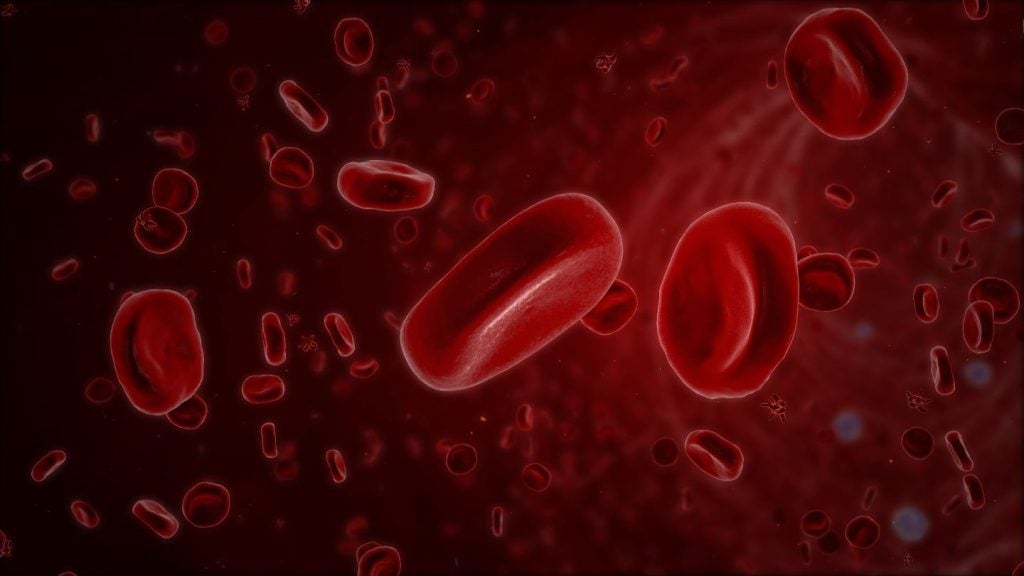Covid leads as Pharmaceutical Technology lists the top five terms tweeted on infectious diseases in February 2022, based on data from GlobalData’s Pharmaceuticals Influencer Platform.
The top trends are the most mentioned terms or concepts among Twitter discussions of more than 150 infectious diseases experts tracked by GlobalData’s Pharmaceuticals Influencer platform during February 2022.
How well do you really know your competitors?
Access the most comprehensive Company Profiles on the market, powered by GlobalData. Save hours of research. Gain competitive edge.

Thank you!
Your download email will arrive shortly
Not ready to buy yet? Download a free sample
We are confident about the unique quality of our Company Profiles. However, we want you to make the most beneficial decision for your business, so we offer a free sample that you can download by submitting the below form
By GlobalData1. Covid-19 – 1,318 mentions
The decline in Covid-19 infection rates in the US, the need to protect high-risk groups and healthcare workers, and the precautions to be taken as Covid eventually becomes an endemic were some of the popular discussions in February 2022.
Laurie Garrett, a former senior fellow for global health at the Council on Foreign Relations (CFR), an independent think tank and publisher, shared an article on a 90% decline in new Omicron infection cases in the US since its peak in January 2022. The decline in cases has led US states to lift mask mandates and gradually return to normalcy after two years of the pandemic. Data from the Johns Hopkins University further suggested that the country reported an average of 84,000 new cases a day, down from a high of 800,000 daily new infections on 15 January 2022. Garrett also tweeted that wastewater tracking revealed that SARS-CoV2 RNA levels had declined from a month ago in about 60% of the test sites across the US.
The term was also discussed by Gregg Gonsalves, a policy modelling expert on infectious diseases and substance use, on the need to protect high-risk groups despite a decline in the rate of infections. He tweeted that healthcare workers require protection as they were working in direct contact with infected individuals. Gonsalves highlighted that herd immunity should be achieved, while protecting vulnerable populations including medically weak adults and children.
See Also:
In another tweet, Ian M Mackay, scientist and an adjunct associate professor at the University of Queensland, discussed how Covid will soon become an endemic. He cautioned that individuals, governments, or communities should not downgrade the threat and drop all Covid-19 protocols. The article highlighted that considering a disease as endemic does not mean that it is mild. The disease may remain, but protection is still key for the vulnerable population. The transition towards endemic, however, will be challenging especially due to the emergence of new variants. Next-generation vaccines that combat all variants and that are more effective in controlling transmission may help with the transition, the article highlighted.
2. Vaccines – 1,143 mentions
The development of two lesser-known but game-changer vaccines in the US, the need for vaccine equity to protect against future Covid-19 waves, and Malawi’s polio vaccination rates were some of the popular discussions during the month.
Peter Hotez, a vaccine scientist and professor and dean at the National School of Tropical Medicine at Baylor College of Medicine (BCM), shared an article on two game-changing vaccines, NVX-CoV2373 and CORBEVAX. NVX-CoV2373 was developed by US-based biotechnology company Novavax, while CORBEVAX was developed by two scientists from the Texas Children’s Hospital including Dr. Maria Elena Bottazzi and Dr Peter Hotez himself. The World Health Organization (WHO) stated that the most effective way to deal with the pandemic is to vaccinate at least 70% of the world’s population by mid-2022 before the emergence of another variant of concern.
The article further detailed that mRNA vaccines are ground-breaking and effective, but come with logistics and storage challenges making them inaccessible to remote communities. The NVX-CoV2373 vaccine uses a different vaccine biotechnology from other Covid-19 vaccines and is made in moth cells rather than mammal cells, making it quicker to produce. The CORBEVAX vaccine is also protein-based, but uses yeast fermentation and is not made in human or animal cells. It has demonstrated more than 90% effectiveness against the virus’s original strain and 80% effectiveness against the Delta variant in clinical trials conducted in India, the article noted.
Vaccines were also discussed in an article shared by Seth Berkley, the CEO of Gavi, the Vaccine Alliance, on a new mathematical modelling that suggests that vaccine donations by richer nations to low and middle-income countries can help in protecting the world against future Covid-19 waves. Data further suggested that an excess of nine billion doses of coronavirus vaccines were administered globally until 31 December 2021, which translated into 116 doses for every 100 people. Experts opine that these vaccine doses were largely administered to people in wealthier nations, as a result of which more than 70% of the population in the richer countries are fully vaccinated, while just close to 4% of the population in low-income countries is fully vaccinated, the article highlighted.
In another tweet, Helen Branswell, an infectious diseases and health reporter at the news website Stat News, discussed the term while sharing an article on Malawi declaring a Polio outbreak. The wild poliovirus type 1 was detected in a child in Lilongwe for the first time in the past five years with genetic analysis indicating that the virus originated from Pakistan. Branswell believes that Malawi should be able to contain the situation as it remained consistent with its Polio vaccination initiatives during the pandemic. The article further highlighted that the Global Polio Eradication Initiative (GPEI) Rapid Response Team at the WHO’s regional office in Africa deployed a team to Malawi to assess the situation, and to manage further data, surveillance and operations. Polio is considered to be highly contagious and has no cure currently, although it can be prevented through a safe and effective vaccine.
3. HIV – 445 mentions
A cutting-edge treatment curing a woman with HIV for the first time, the disparity in care and Covid-19 vaccination in people living with HIV, and a reduction in HIV pre-exposure prophylaxis (PrEP) prescriptions in the US, were some of the popular discussions in February.
Carlos del Rio, a professor of medicine at the Emory University School of Medicine, shared an article on a woman in New York being cured of HIV for the first time, following a breakthrough stem cell transplant treatment introduced four years ago. Researchers claimed that the patient is now free of HIV medication and is healthy. The woman joins three other men who have been cured of HIV, the article noted. The treatment received by the woman is known as haplo-cord transplant and was developed by researchers at the New York-Presbyterian Weill Cornell Medical Center in New York City. It involves a transplant of umbilical cord blood, which is followed by a graft of adult stem cells.
The term was also discussed by Laurie Garrett on a New York City (NYC) study confirming that 64% of the population with HIV were vaccinated against Covid-19 by the end of October 2021, as against 75% of other adults living in the city. The study highlighted that a failure to vaccinate HIV positive individuals was highest, while they also lacked care and attention for treating HIV infections. Additionally, just 58% of black HIV+ Americans were vaccinated. The study further revealed that New York had the highest number of people living with diagnosed HIV infection (PLWDH), where they were more likely to be hospitalised and die from Covid-19 than those who were not diagnosed or living with HIV, the article detailed.
In another tweet, Amesh Adalja, an infectious disease physician, discussed how there was a 22% and 25% drop in HIV pre-exposure prophylaxis (PrEP) prescriptions and new PrEP users, respectively, between March 2020 and 2021. The team of researchers also found a 17.4% decrease in PrEP prescriptions in June 2020 and a more than 25% decrease in December 2020, February 2021, and March 2021, the article detailed. Researchers believe that tracking trends for the use of HIV drugs was important to assess whether the impact of the Covid-19 pandemic had subsided after the lockdowns were lifted and the increase in vaccination rates. The study also noted that further research was required to understand the implications of the reduced use of HIV drugs during the pandemic on HIV transmission.
4. Flu – 86 mentions
The flu season in the US and across the world gradually waning in 2022, the right treatments for flu and fever, and the discrepancy in Covid-19 hospitalisation rates versus respiratory syncytial virus (RSV) and flu, were some of the popular discussions during the month.
Helen Branswell shared WHO’s analysis on how influenza activity was low and decreased this year after peaking at the end of 2021. The latest global influenza report by WHO also found waning effects of flu across the US and rest of the world, except in Northern Africa. The increased prominence of influenza during the pandemic called for countries to increase their preparedness and surveillance for both the viruses, which included vaccination programmes to prevent severe disease and hospitalisations caused by influenza.
Flu was also discussed by Dr Judy Stone, an infectious disease expert, on the need to take the right treatment for flu and fever. Stone shared an article on how excess fluid intake and fever-reducing medicines such as aspirin, ibuprofen or acetaminophen caused more weakness rather than treating flu and fever. Tamara Hew-Butler, an exercise physiologist, emphasised that medicines and extra fluids not only weaken the body’s immune response to the infection, but also tend to cause other side effects.
A double-blinded, placebo-controlled study, for example, found that healthy individuals with flu symptoms who took aspirin or acetaminophen for seven days had reduced immune response to fight the infection in addition to increased viral shedding or viral discharge from the nose. Another study found that aspirin reduced fever but increased shedding, the article noted. Hew-Butler stated that some studies suggest that drinking extra fluids may lead to overhydration in people suffering from fever and cold, which could lead to unwanted symptoms such as nausea and headaches, and in severe cases may also lead to coma and seizures.
In another tweet, Michael Walsh, an epidemiologist, discussed the difference between hospitalisation rates for Covid-19 against RSV and flu in children aged between five to 11 years affected by viral infections across 11 US states. The data indicated that the total number of hospitalisations was 379 for children suffering from the multisystem inflammatory syndrome in children (MIS-C) compared to 343 for children suffering from Covid-19 but without MIS-C between January and March 2021. Likewise, 1,134 hospitalisations were reported for children suffering from influenza compared to 413 suffering from RSV between January and March 2017.
Walsh believes that the difference was not surprising because complicated RSV and flu in children affected younger kids more and is driven by pneumonia or acute respiratory distress syndrome (ARDS). Complex Covid, however, affected older children and was driven by cardiovascular disease and other neurologic complications.
5. Immunity – 60 mentions
Prior Covid-19 infection providing no guarantee for immunity, insufficient immunity in the respiratory tract during Covid leading to pneumonia, and vaccines causing waning immunity, were some of the popular discussions in February.
Paul Sax, clinical director of the infectious diseases division at the Brigham and Women’s Hospital and professor of medicine at Harvard Medical School, shared an article on prior Covid-19 infection providing limited immunity to individuals from being reinfected by SARS-CoV-2 virus. Sax stated that immunity could vary from person to person and based on the severity of the disease. Prior Covid infection, therefore, did not imply that it could provide lasting protective immunity or herd immunity. Studies continue to reveal that hospitalisation and death rates are higher among unvaccinated individuals, despite prior infection becoming more common, he added.
The term was also discussed by Lawrence A Tabak, acting director of the National Institutes of Health (NIH), on SARS-CoV-2 infection triggering oxygen-deficient Covid-19 pneumonia symptoms in about 10% of the cases in the US. A new study funded by the NIH found that insufficient type 1 IFN immunity in the respiratory tract was leading to a viral spread, which ultimately led to increased pulmonary and systemic inflammation. Researchers explain that TLR3- and TLR7-dependent creation of type I IFNs by respiratory epithelial cells and plasmacytoid dendritic cells respectively is critical in fighting the SARS-CoV-2 virus. A lack of this immunity during the initial days of infection could lead to inflammation of the air sacs of the lungs, the study highlighted.
In another tweet, Ian M Mackay, shared a study on the waning immunity after taking vaccines for Pertussis, Diphtheria, Tetanus, or Polio. The study found that immunity seemed to reduce after taking Pertussis and Diphtheria vaccines, although Tetanus and Polio vaccines continued to provide protection. The WHO recommends Pertussis, Diphtheria, and Tetanus (DTP) vaccines combined with Polio vaccines in its routine vaccination programmes. The study highlighted that declining immunity as a result of the vaccines has led to the return of vaccine-preventable diseases globally.
A systematic review and meta-analysis of the protective immunity provided by the vaccines by researchers highlighted that further research is required on the risks factors associated with waning immunity caused by these vaccines, and also regarding the timing of Pertussis and Diphtheria booster doses.









Related Company Profiles
Novavax Inc